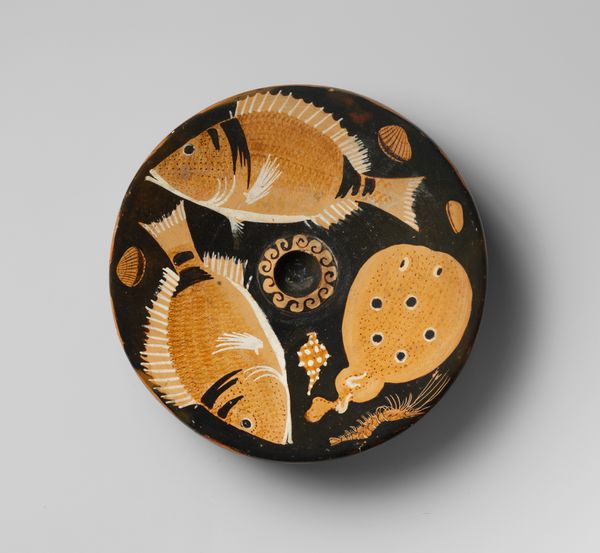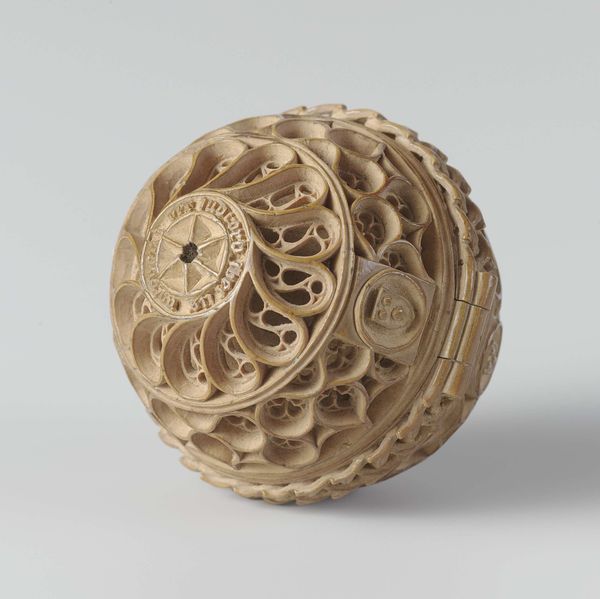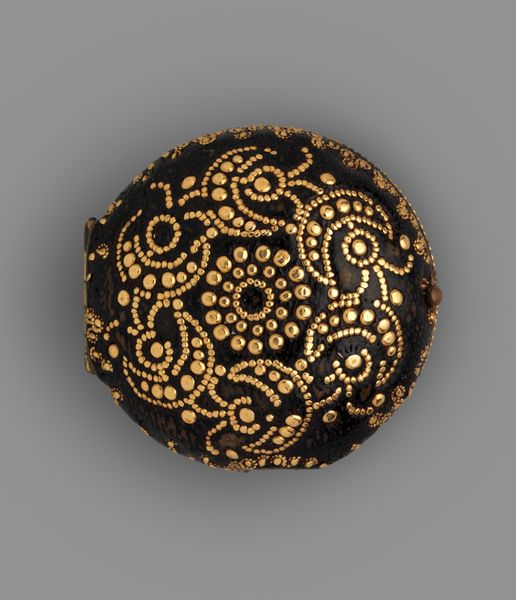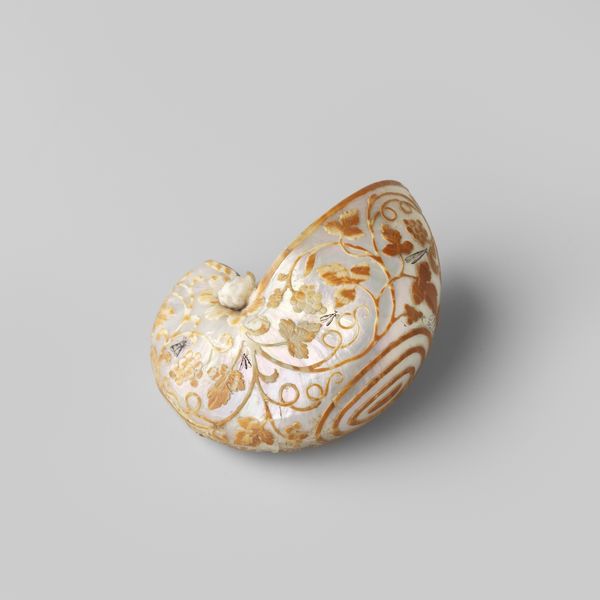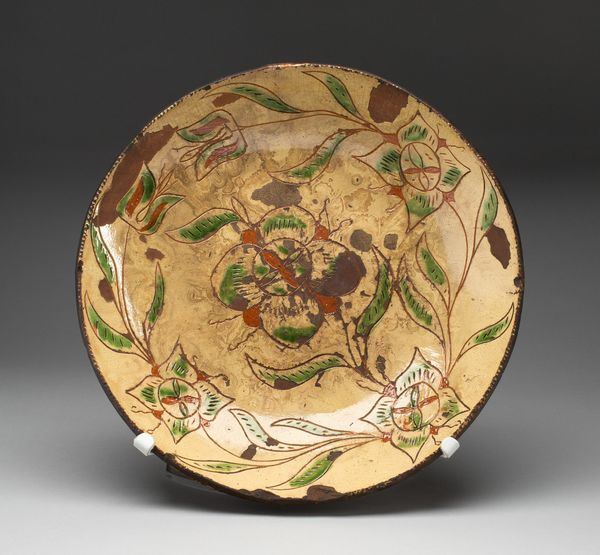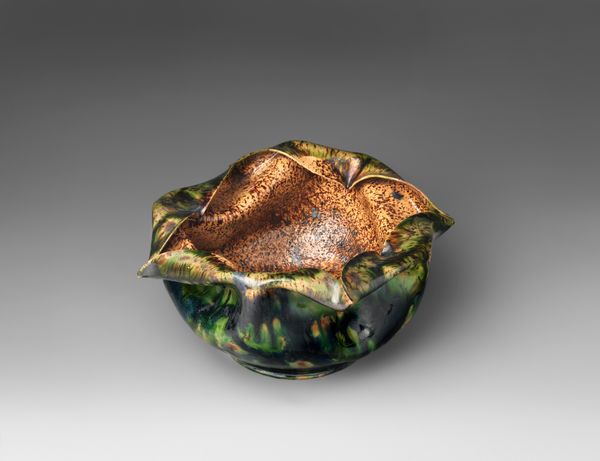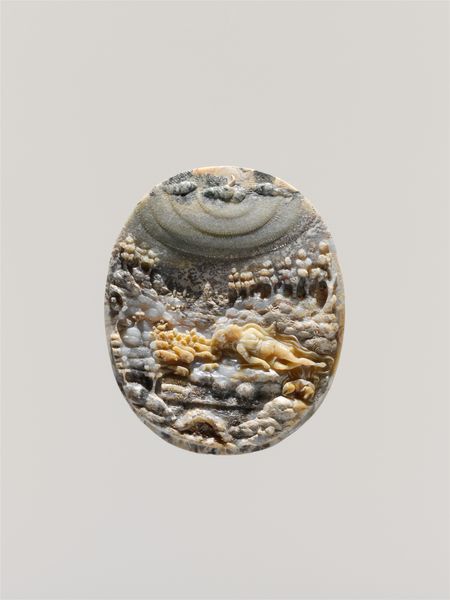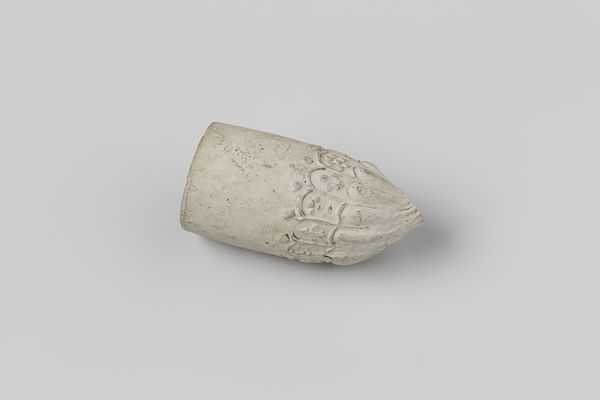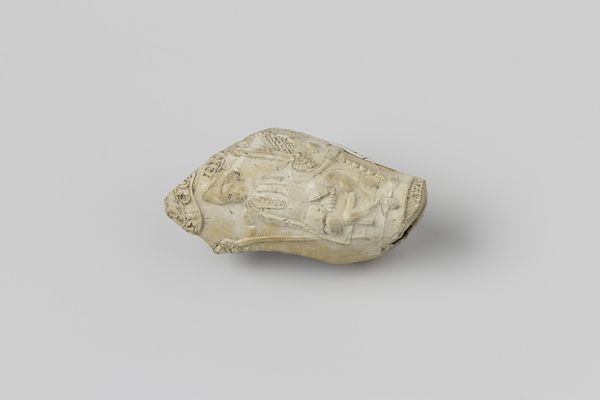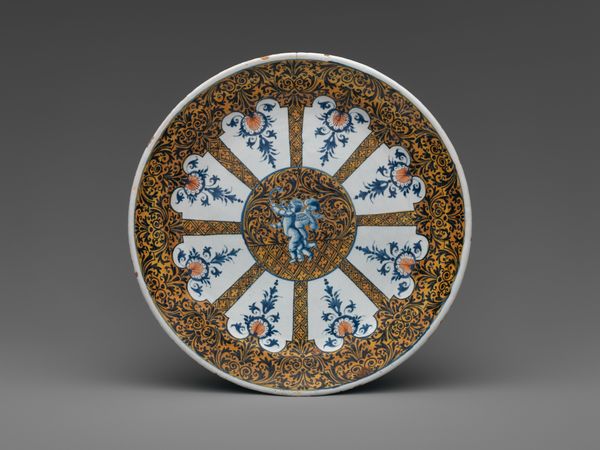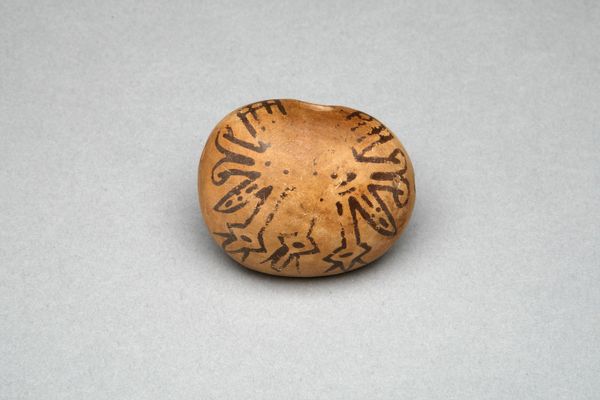
carving, relief, wood
#
carving
#
asian-art
#
relief
#
ceramic
#
wood
#
miniature
Dimensions: H. 7/8 in. (2.2 cm); Diam. 2 1/8 in. (5.4 cm)
Copyright: Public Domain
Editor: Here we have Ryūsa’s "Flowers and Grasses with a Praying-Mantis", made sometime between 1767 and 1799. It's a miniature carving from wood and relief, and is on display at the Metropolitan Museum. I'm struck by its intricacy; how do you approach a piece with this level of detail? Curator: The piece is an intriguing example of the *netsuke* tradition, yes? Immediately apparent is the complex interplay between positive and negative space. Note the density of the carved forms against the emptiness; consider the function of that contrast. The composition invites us to carefully explore the interplay of forms; each element balances, echoing throughout the form. Where does your eye go first? Editor: I'm drawn to the praying mantis, near the center. Its placement really anchors the whole design. What does it signify within the greater composition? Curator: Precisely! Note how the artist deploys visual weight, color variation, and relative size. Does the mantis command the foreground, or does it blend seamlessly? Analyze the artist’s manipulation of planes. Consider the relationship between the raised and recessed areas, and how that articulation impacts the texture of the piece overall. Editor: So you’re less concerned about what the mantis symbolizes, and more about how its visual weight influences the piece's balance. That’s a great reminder to examine the artistic function of specific iconographies. Curator: Yes! We must initially grasp its structure. Understanding the intrinsic structure, with close readings to the form, will lead us to understanding Ryūsa's practice, its period. Then can we assess potential cultural functions or, even meanings. What did you gather overall? Editor: I realize I should focus on the structural arrangement and visual characteristics and build up the understanding around it. Thank you.
Comments
No comments
Be the first to comment and join the conversation on the ultimate creative platform.
